You might be familiar with fish, blood and bone fertiliser, but removing the fish part doesn’t just make it smell slightly better, it can be gentler on some plants, providing support during the flowering stage, rather than generally feeding your garden in spring.
Typically sold as a ground fertiliser, or ‘meal’, blood and bone meal is easy to use, but it’s possible to use it wrong, or go over the top, so follow this guide for everything you need to know about this unexplored nutrient enhancer for your garden.
More...
What is Blood and Bone?

Blood and bone is the dried waste from the meat industry, typically dried and ground into a fine powder. This makes it ideal for use in the garden as a medium-speed fertiliser, which doesn’t impart its goodness all in one go.
By sprinkling blood and bone meal onto your garden soil, you create a fine layer of nutrients that can be worked in by worms, or rain, and will provide medium-term support for flowering plants right through spring, summer, and autumn.
Blood and Bone Nutritional Values
The most popular blood and bone meal on the market, Yates Blood and Bone, has an NPK of 8:1.6:1.5, meaning it has 8% accessible nitrogen, 1.6% phosphorous, and 1.5% potassium. When watered down, this becomes lower, when applied directly, those nutrients add the same value as they do in the packet.
As well as those essential nutrients, blood and bone meal provides huge amounts of iron and calcium to the soil, which is accessible and perfect for fruiting plants around harvest time.
Similarly to fish, blood and bone, it is useful for tomatoes and peppers to prevent diseases related to calcium deficiency like blossom end rot.
How is Blood and Bone Different from Fish, Blood and Bone?
Fish blood and bone has an average NPk of 3:9:3, so provides less nitrogen, but more phosphorus and potassium, making it a more rounded fertiliser. The biggest problem most gardeners find with fish, blood and bone fertiliser, is that it can attract rats due to its strong smell.
That is still the case with just blood and bone meal, but to a lesser extent, and when watered, it doesn’t release quite such a pungent aroma in the garden.
Difference Between Blood and Bone vs Bone Meal
Bone meal is especially high in phosphorus and calcium, but not much else. During fruiting, bone meal should be applied as a preventative measure or treatment for calcium-related deficiencies, or if you notice the onset of bud rot or bud drop in any plant.
Blood and bone is slower to take effect, so should be used at the flowering stage ideally, providing preventive support, rather than immediate treatment.
How to Use Blood and Bone
Using blood and bone meal fertiliser is really simple, but do wear gloves and the odour does tend to linger on your hands if you are in direct skin contact with it.
Follow the guide below for two easy ways to use blood and bone around the garden.
Using Blood and Bone as a Fertiliser
The most common way to use blood and bone meal as a fertiliser is by sprinkling it directly around the base of flowering plants, but the amounts will vary depending on each plant, and its current state.


Get Your Free Guide:
Master Growing Australian Natives eBook
A Must Have Complete Guide for Every Australian Garden
Get Your Free Guide:
Master Growing Australian Natives eBook
A Must Have Complete Guide for Every Australian Garden
- Wearing gloves, sprinkle a small handful of blood and bone over about 1m2 of garden soil. It is potent stuff and doesn’t need to be used liberally to take effect.
- After application, gently water the blood and bone meal in especially in windy climates where it can blow away from dry soil.
- If you notice that your plants are still having flowering or fruiting problems two weeks after application, repeat, or try bone meal as an alternative.
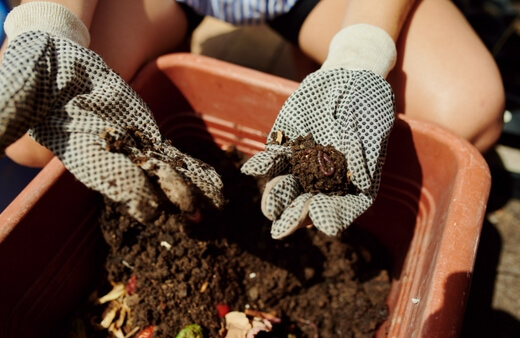
Using Blood and Bone to Improve Compost
The reasonably well-balanced NPK of blood and bone makes it a useful compost additive. If your garden compost pile is largely brown materials, it will have an imbalance towards carbon, and not enough nitrogen.
Nitrogen is added naturally through green grass clippings, and kitchen waste, while the dead trimmings of plants in autumn that make up the majority of our compost pile tend to produce a carbon-heavy compost.
Adding a few handfuls of blood and bone to your compost every few months enhances its base nutrients, making it more beneficial to your plants as a mulch in spring.
Make composting easier by checking out our guide choosing the best compost bins in Australia.
When to Use Blood and Bone
Blood and bone is best used in spring and summer. In autumn, most plants are beginning their journey into winter dormancy, so over-feeding non-fruiting plants or shrubs that have finished flowering is a waste of fertiliser.
Use blood and bone, before flowering, or during fruiting for best effect.
What Plants Benefit from Blood and Bone?
Blood and bone is suitable for all plants in the garden. Its slow-release properties mean it won’t harm or burn plants unless applied in excess.
The best plants to use blood and bone for maximum productivity are veggies, like tomatoes, peppers, and aubergines, which really do benefit from the iron and calcium, which will enhance flavour and help them to fight off both fungal and bacterial infections throughout the season.
Flowering annuals, herbaceous perennials, and any flowering shrub that flowers mostly through summer and autumn will also benefit greatly from blood and bone, which has slower effects through the season from a single spring application, rather than using liquid fertilisers throughout the season.
What Plants should not be given blood and bone?
There are no plants that shouldn’t be given blood and bone for health reasons, but for any non-flowering plant, evergreen shrubs, or short-lived annuals, you will very much be wasting your money.
Avoid using blood and bone on cypress, lobelia, or heathers, as they will rarely benefit from that form of fertiliser, and prefer good compost instead.
Safety Guidance for Blood and Bone
Blood and bone is an organic product and has very few safety considerations as a result, but due to the way it is manufactured, you should always wear gloves and wash your hands and arms thoroughly after using it. Contact with eyes or accidental ingestion does run the risk of stomach upsets and food poisoning.
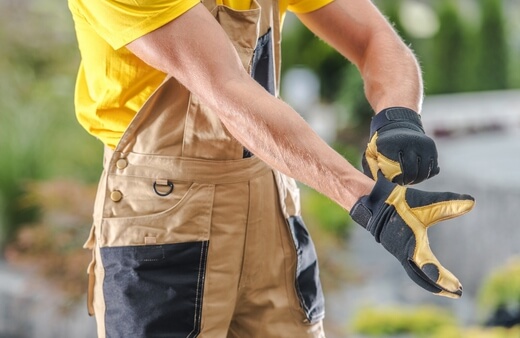
Equally, while it is not a personal safety concern, avoid using blood and bone in excess, and it does attract vermin when the odour is allowed to overtake your yard. In small amounts, the odour is barely detectable and will fade after a few hours or watering in.
Where to Buy Blood and Bone for the Garden
Yates sells the most popular blood and bone in Australia, but various online retailers including amazon sell affordable blood and bone for the garden.
Blood and bone meal is also processable at home from leftover bones, but the process of dehydrating and drying them is unpleasant and time intensive, so it's often better value to buy prepared blood and bone meal.
Blood and Bone Frequently Asked Questions
Is blood and bone a good all round fertiliser?
Blood and bone is a good slow-release fertiliser, but should not be used as a sole replacement of other organic products as it is not an all round balanced fertiliser.
Does blood and bone help grass grow?
Pretty much all slow-release fertilisers are good for grass. The biggest problem with grass fertilisers is often leaf scorch, leading to brown, or even dead patches of turf. Using blood and bone is a gentle alternative that supports all round health, and helps to make other soil nutrients available to your lawn.
Do roses like blood and bone?
Blood and bone is ideal for roses, and can help to supplement other fertilisers and mulches like rotted cow or horse manure. Its gentle release of nutrients is soft enough to not impact the roses in their early spring stage but will support flower health and help blooms last longer on the plant, as well as when cut.
Is blood and bone high in potash?
Potash, or potassium, is barely present in blood and bone, so for plants that need high potash fertilisers, consider using chicken manure or fish, blood and bone instead.
How much blood and bone should you use in pots?
Blood and bone is an impressive slow-release fertiliser, with long-lasting effects that can take some time to show their impact. For that reason, it’s important not to over-feed pots, and use it sparingly, with a small sprinkle (about 1 tablespoon) per pot.
Can you mix blood and bone with water?
Powdered blood and bone can be mixed with water, but it doesn’t dissolve fully. To use blood and bone in water, stir it regularly between each plant to stop it from settling at the bottom of your watering can.
Is blood and bone poisonous?
Blood and bone can cause vomiting, constipation, and diarrhoea as it is an unrestricted product of the meat industry. The process of drying and grinding does kill most bacteria, but it is still possible for common food bacteria to reside, and it is therefore essential that hands are washed after using blood and bone.
Wrapping Up Our Blood and Bone Guide
Blood and bone meal isn’t to everyone's taste, but it’s a traditional fertiliser that has stood the test of time. When you know how and when to use it, it’s one of the most effective fertilisers for any garden, and it helps to reduce waste from the food industry, so is particularly useful for gardeners looking to do their bit for the environment by cutting excess waste.
Published on February 28, 2023 by Gary Clarke
Last Updated on October 25, 2023

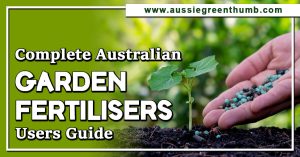
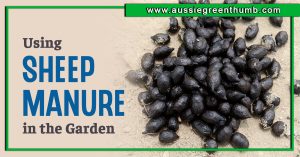

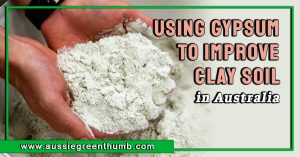
Thank you Gary for your great insights
and information, very helpful !
Jennifer
You’re welcome, Jennifer!
We’re glad we could help. If you have any questions, feel free to reach out anytime.
Best regards,
Gary Clarke